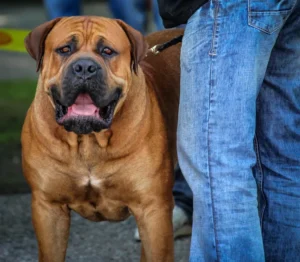
One of the greatest joys of pet ownership is cuddling. Many dogs seem to take great delight in having their bellies scratched; flopping on their backs with tongue lolling out, tail wagging in anticipation for this service. Some dogs do this to send a message; these gestures could not mean anything other than asking for belly rubs! Read up on why some pups crave belly rubbings while others don’t.
Why Do Dogs Exposed Their Bellies? Dogs roll onto their back and show us their bellies for two main reasons: as an expression of appeasement or as a request for belly rubs. It’s important to recognize what message your pup is conveying before giving out any belly rubs!
An appeasement gesture (commonly referred to as submissive display) by a dog aims to reduce social tension by showing they don’t pose a threat. Petting such a dog may cause even greater anxiety as you’ll likely touch more delicate parts of his body than previously.
Dogs Seeking Belly Rubs
In general, dogs who desire belly rubs will demonstrate it with certain body language signals:
Body: loose and wigglyWigglyMouth: relaxed and open–you may see their tongue flopping around to indicate relaxationWiggly Eyes: open/squinty, bright but not necessarily staring at anythingWaggyTail: relaxed and may wag
Vocalizations may occur, such as a “ha-ha” sound as they “laugh”, or light panting sounds; silence may also occur naturally. Appeasement Display
By contrast, dogs that display submissive or appeasing behavior will show subdued behaviour such as this:
Body is tight and low, possibly crouching or freezing; they may even tense up completely, with mouth tight with lips pulled back to create an “fear grimace,” or they could remain closed completely with frequent lip-licking and tongue flicking seen throughout their interactions. Occasionally you might hear grunting. In these states, lips pull far back in fear grimaces with teeth pulled far back to form “fear grimace” grimaces, while mouth is either open completely with no response provided, or tight with teethswimping heard.
Eyes wide open and looking into the distance or squinty and tense; their eyes may show whites as they stare directly at you without turning their head; their tail may either remain still or move slightly; either way it has tension at its base and may even be tucked up behind their body.
Vocalizations may take the form of soft whining or quiet behavior from their dog; most people find it easiest to observe their tail and mouth; however, keep in mind that a wagging tail doesn’t automatically mean happiness for a pup; rather it represents how loosely their tail wags! A tight or stiff fast tail wag differs greatly from its counterpart which features full body movements.
Why Do Dogs Like Belly Rubs? Dogs must find belly rubs immensely pleasurable! Rubs and scratches to hard-to-reach areas must feel great, making your entire body relax with each stroke of a belly rub. Though dogs can scratch themselves at their shoulders, necks, or heads with their hind feet, their hind feet don’t offer an effective means for scratching themselves on their tummies; some even kick one or both legs during a belly rub to stimulate this action known as their scratch reflex1. 1
Many dogs enjoy rolling on carpet or grass to scratch their backs. Anecdotally, many seem to enjoy getting a belly rub while they scratch. Imagine how good it feels having someone rub your back or scratch an itch that you just can’t reach yourself — that must be why dogs love getting help with belly rubs!
Not All Dogs Love Belly Rubs
Unfortunately, not all dogs appreciate belly rubs; many simply don’t seek them out as often as others do. If yours doesn’t enjoy them or isn’t keen right now, don’t take it personally; some pups just aren’t in the mood!
Many dogs only respond well to belly rubs in the morning when serotonin levels are at their highest, or when they feel completely at ease.





